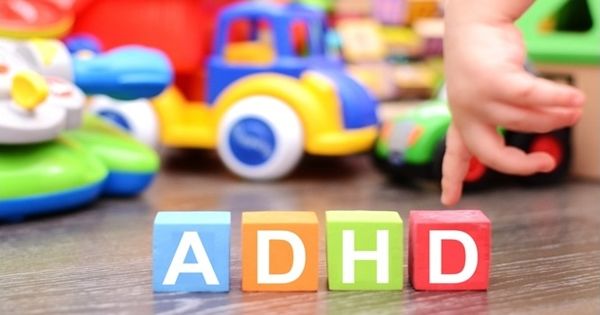Machine learning can detect ADHD with almost perfect accuracy. Machine learning paradigm is superior to analogous predecessors or conventional behavioral diagnostics, says UB researcher. A recent study led by the University of Buffalo researcher identified how specific coordination between various brain regions, known as brain connectivity, can serve as a biomarker for attention deficit hyperactivity disorder (ADHD). The study focused on a deep framework using machine-learning classifiers to classify with 99 percent accuracy some people who had been diagnosed with ADHD in childhood several years ago.
Potentially having consequences for the diagnosis of ADHD, which is notoriously difficult to diagnose due to ever-changing neurodiversity presentations. However, the results of this research can also be applicable to potential care planning through understanding where an individual may be put on the ADHD continuum.
An American study has developed a machine learning model that can identify attention deficit hyperactivity disorder (ADHD) to a 99% accuracy in adults who have received a childhood diagnosis.
“This suggests that brain connectivity is a stable biomarker for ADHD, at least into childhood, even when an individual’s behavior had become more typical, perhaps by adapting different strategies that obscure the underlying disorder,” said Chris McNorgan, Assistant Professor of Psychology at the UB College of Arts and Sciences, and lead author of the research.
The results, published in the journal Frontiers in Physiology, have consequences not only for the diagnosis of ADHD, a widespread yet diagnostically slippery condition that is difficult to classify, but may also allow physicians to prioritize care through recognizing where patients are in a broad spectrum.
“Because certain pharmaceuticals react with certain pathways, understanding the different types of ADHD can help inform decisions about one medication versus others,” said McNorgan, a specialist in neuroimaging and computational modeling.
Attention deficiency disorder is the most widely identified psychiatric disorder for school-aged children, but it is difficult to classify. In comparison, several subtypes confuse the clinical concept of ADHD.
A medical diagnosis of ADHD in a patient can improve as the same patient returns for a subsequent examination. “A patient may be exhibiting behavioral symptoms consistent with ADHD one day, but even days later, might not present those symptoms, or to the same degree,” McNorgan said. “It could just be the difference between a good day and a bad day. ” But ADHD’s brain communication signature seems to be more robust. We’re not getting a condition flip-flop.”
The UB multidisciplinary research team, Cary Judson of the Department of Psychology and Dakota Handzlik of the Department of Computer Science and Engineering, and John G. Holden, associate professor of Psychology at the University of Cincinnati, used archival fMRI evidence from 80 adult participants diagnosed with ADHD as infants.
Machine learning classifiers were then applied to four snapshots of behavior during a task designed to assess the ability of the subject to suppress the automatic response. Based analyses of individual runs produced 91 percent diagnostic precision, while the cumulative analysis was close to 99 percent. “It’s by far the highest accuracy rate I’ve seen reported anywhere — it is leagues beyond anything that has come before it, and well beyond anything that has been achieved with a behavioral assessment,” McNorgan said. “Many factors likely contributed towards our superior classification performance.”
Previous studies suggesting a link between brain connectivity and ADHD have used straightforward linear grouping. This study explores the relationship between something and what is expected by something, such as coffee and results.
Direct linear labeling is useful in many areas, but the association between coffee and results, such as behavioral symptoms and ADHD, is not linear. One or two cups of coffee may improve the performance, but at some stage, the caffeine may harm the performance. Nonlinear relationships occur because, according to McNorgan, you may get “too little or too much of a good thing,”
Deep learning networks are well suited for identifying non-linear, conditional interactions. In the current research, ADHD was predicted by patterns of connectivity between groups of brain regions, say, A, B, and C. If regions A and B were very closely related, this may be indicative of ADHD, but not if these regions were both very closely linked to region C. These kinds of relationships are troublesome for the most widely used methods, but not for deep-learning classifiers.
McNorgan’s model is further improved by the classification of ADHD individuals with normal or atypical performances on the Iowa Gambling Mission (IGT). IGT is a behavioral model comparable to a casino card game that offers both high-risk and low-risk choices and is widely used to research and diagnose ADHD.
Orthodox methods cannot have more than one classification at a time. McNorgan’s solution elegantly connects ADHD diagnosis to IGT performance to provide a possible connection that explains why both are linked to brain wiring. Even while people with ADHD tend to make more risky choices in IGT, it is not a universal determinant. Some people without ADHD also make riskier choices than others.
“This approach by differentiating both of these dimensions provides a mechanism for sub-classifying people with ADHD in ways that can allow for targeted treatments,” McNorgan said. “You can see where patients are on the spectrum,” he said, “and multiple brain networks are interested in people at either end of the continuum. This approach opens the door to designing treatments that concentrate on particular brain networks.
















